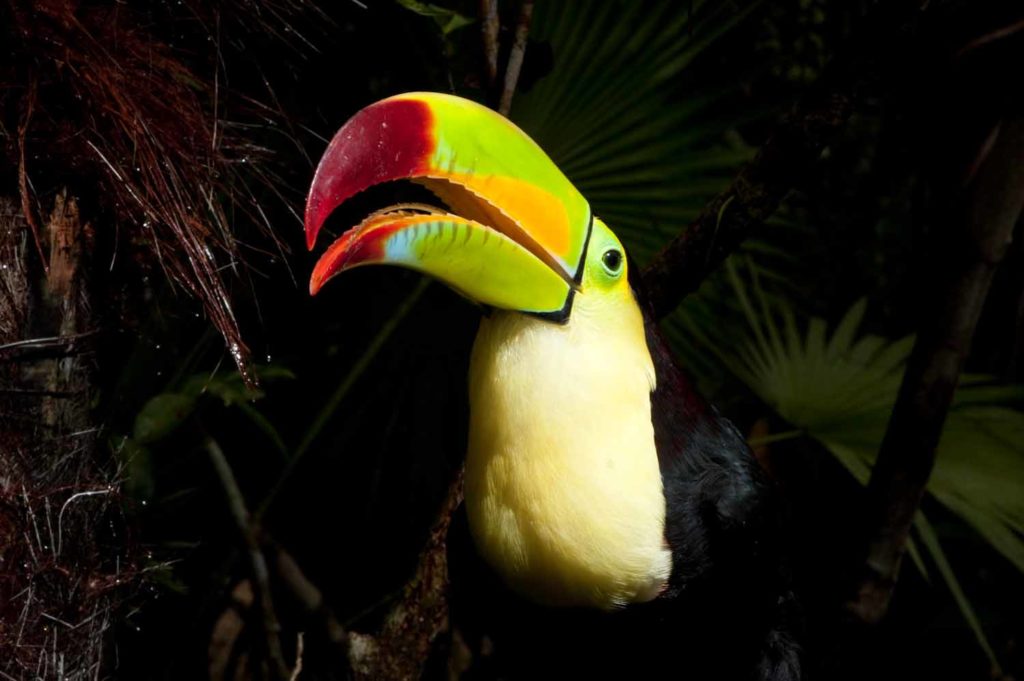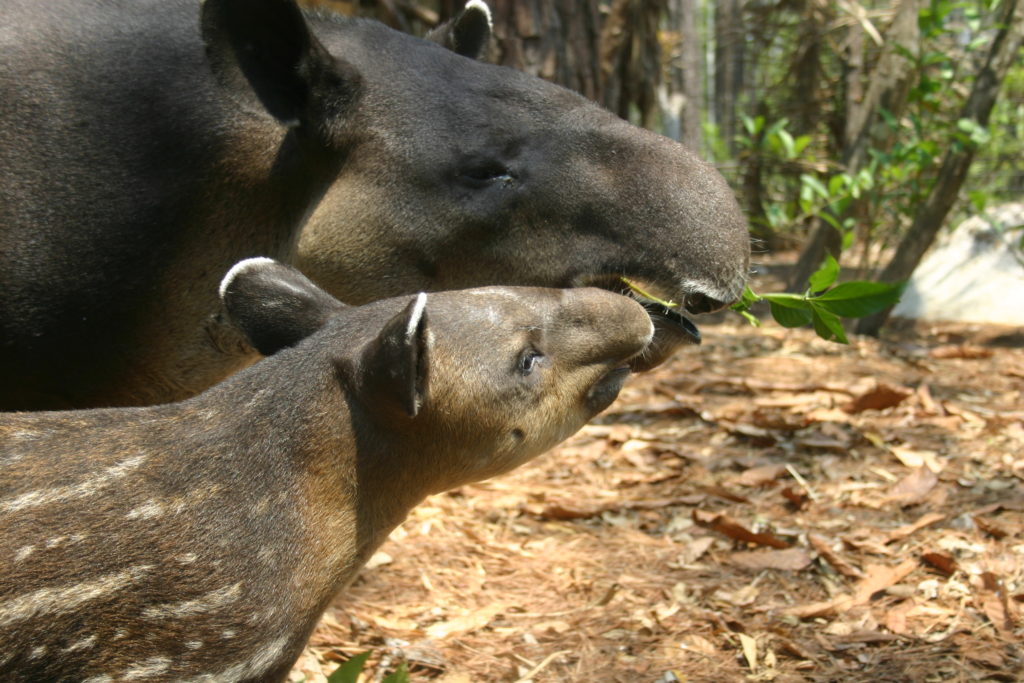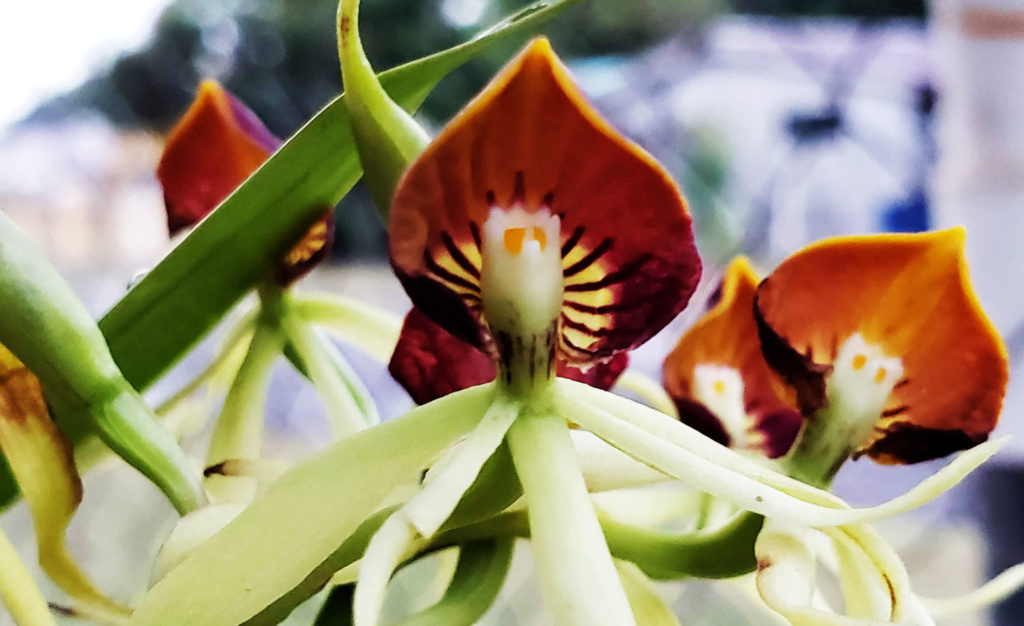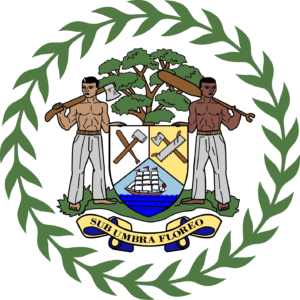National Bird – Keel-billed Toucan
-

Photo courtesy The Belize Zoo
The Keel Billed Toucan (Ramphastos sulfuratus), known as the “bill bird” locally, is the national bird of Belize. The most obvious characteristic of the toucan is the huge yellow, orange, red, green and black canoe-shaped bill. The bird is about 20 inches in overall length. It is mostly black with bright yellow cheeks and chest, red under the tail and a distinctive white patch at the base of the tail. Toucans are one of the most iconic species of the Neotropics, as they only occur in this part of the world.
The Keel-billed toucan is a very social bird and can often be seen in foraging an playing in pairs or small groups. They are found throughout Belize’s forests and nest in holes in tree trunks. They lay one to four eggs and the parent birds take turns incubating the eggs. This bird displays a rapid, heavy flapping of the wings when flying and calls with a creek creek sound, similar to a frog.
Even though they resemble hornbills of Asia, toucans are more closely related to woodpeckers and barbets. Its massive bill is believed to help facilitate heat loss, as it is made of spongy hollow bone and network of blood vessels covered by a layer of keratin.
Toucans are primarily fruit eaters, feeding on a wide variety of tropical fruits of the forest. It feeds by snipping off the fruit and flipping its head back to gulp the fruit whole. Toucans will also feed on insects, lizards, and even the eggs of smaller birds.
Sources: National Heritage Library, The Belize Zoo
National Animal – Baird’s Tapir
-

Photo courtesy The Belize Zoo
The Tapir or “Mountain Cow” (Tapirus bairdii) is the largest land mammal of the American tropics. The tapir is a stoutly built animal with short legs, about the size of a donkey and weighs up to 600 pounds. Its general color is dusty brown with a white fringe around the eyes and lips, white tipped ears and occasional white patches of fur on the throat and chest.
In spite of its local name, the tapir is not a cow. It is closely related to the horse and is also kin to the rhinoceros. The tapir is a vegetarian.
It feeds on grasses, aquatic vegetation, leaves, buds, and fruits of the low-growing shrubs. They sometimes run afoul of man when they cause damage to corn fields and other crops.
The Baird’s Tapir ranges from Southern Mexico to Northern Columbia and is endangered throughout their range. The main threats to the tapir survival are hunting and deforestation.
The National Animal is protected under the law thus the hunting of the tapir is illegal.
Sources: National Heritage Library, The Belize Zoo
National Flower – Black Orchid

The Black Orchid (Encyclia Cochleatum) is the National Flower of Belize. This orchid grows on trees in damp areas, and flowers nearly all year round. Its clustered bulblike stems vary in size up to six inches long and carry two or three leaves.
The black orchid flower has greenish-yellow petals and sepals with purple blotches near the base. The “lip” (one petal of special construction, which is the flower’s showiest) is shaped like a valve of a clam shell (hence the name Encyclia Cochleatum) and is deep purple-brown, almost black, with conspicuous radiating purple veins.
Sources: National Library Service and Information System
Coat of Arms

The shield of the Coat of Arms is divided into three sections by a vertical line and an inverted V. The base section represents a ship in full sail on waves of the sea. The two upper sections show tools of the timber industry in Belize: a paddle and a squaring axe in the right section and a saw
Supporting the shield are two woodcutters, the one on the right holding a beating axe over his shoulder in his right hand, and the one on the left holding a paddle over his shoulder in his left hand.
Above the shield rises a mahogany tree. Below the shield is the motto scroll. A wreath of leaves encircles the Coat of Arms. The motto says: “Sub Umbra Floreo”, meaning “Under the Shade I flourish.” The Coat of Arms embodies an important aspect of the history of Belize, as the mahogany industry formed the basis of our economy in the 18th and 19th centuries.
Sources: National Library Service and Information System
